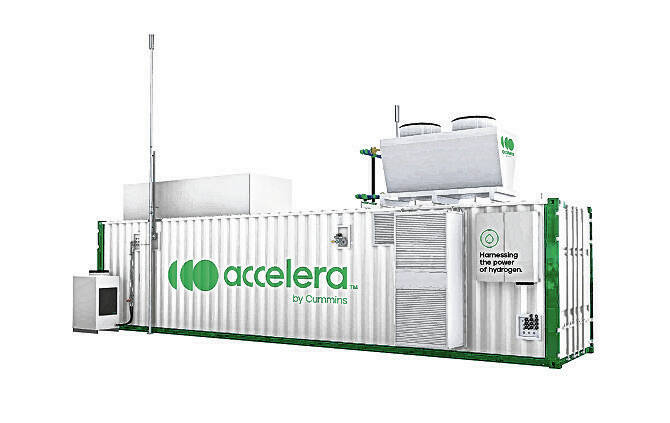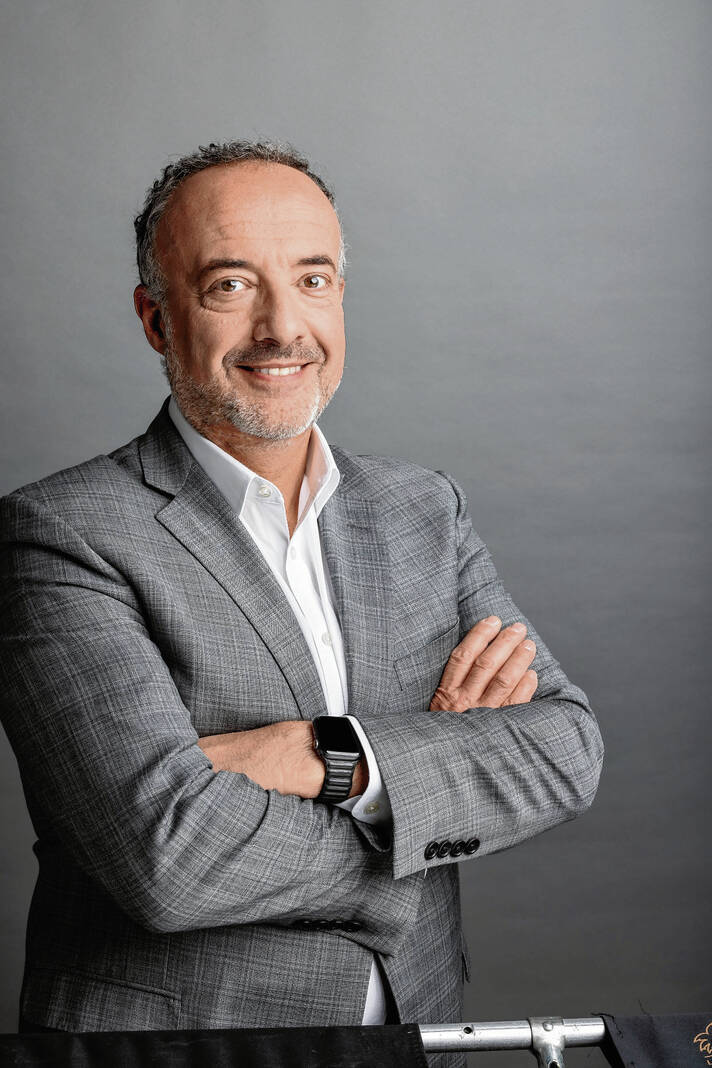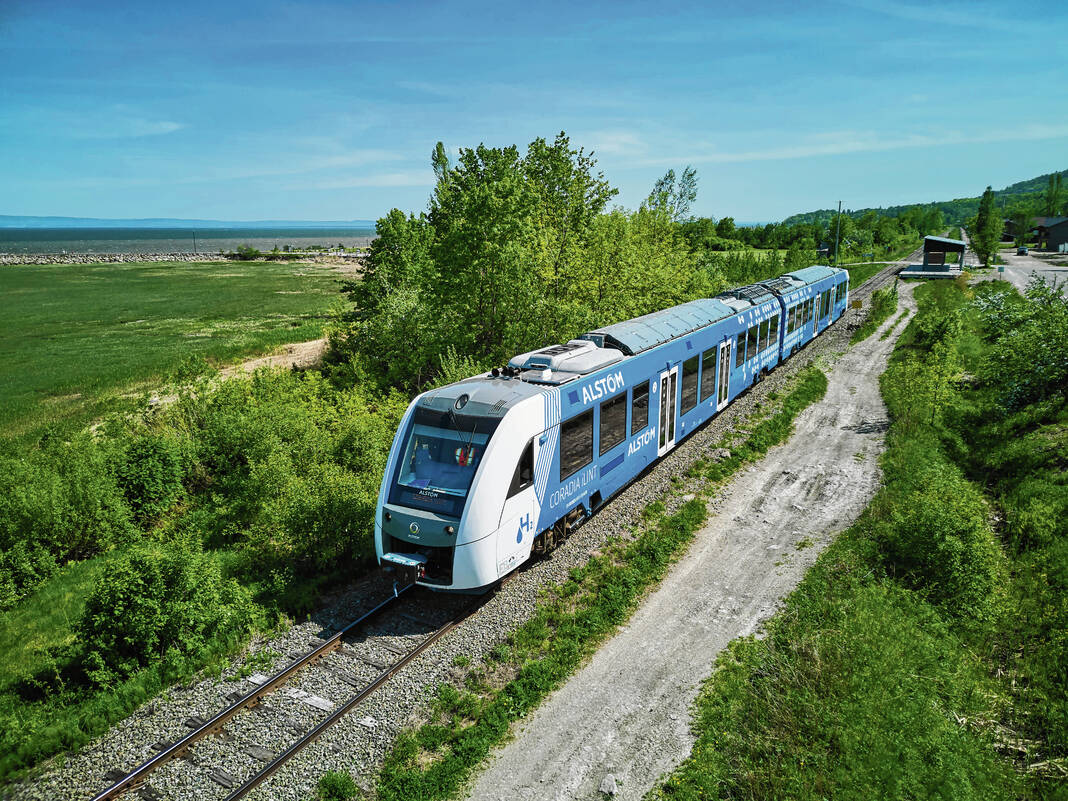A hydrogen-powered passenger train equipped with technology from Columbus-based Accelera by Cummins that has been transporting travelers through a biosphere reserve in Canada as part of a demonstration project is winding down operations.
In June, the Coradia iLint became the first passenger train in North America to be powered by hydrogen when it started taking riders through the Charlevoix region of Quebec, Canada, which has been designated a World Biosphere Reserve by UNESCO.
The train is part of a demonstration project by France-based Alstom that seeks to assess subsequent steps for developing hydrogen propulsion technology and penetration into the North America market. Alstom said in February that the project would test a first-ever green hydrogen ecosystem dedicated to rail transportation on the continent.
Manufactured by Alstom, the Coradia iLint uses Accelera fuel cells to power the train and is supplied with green hydrogen from an Accelera electrolyzer. Accelera is a business segment of Cummins Inc. and is headquartered in Columbus.
The train, which emits only water vapor, was initially expected to run through this past Saturday, though the route’s season has seen extended into November after having “the best year in its history,” according to the rail service’s website. It is unclear if the hydrogen-powered train will operate during the extended period.
“This is the first (passenger train) of its kind, the first that is actually carrying passengers in North America, and it’s especially significant because it validates the technology and the multiple ways that the technology can be used,” said Alison Trueblood, general manager of fuel cell and hydrogen technologies at Accelera by Cummins.
The demonstration project comes as companies around the world are increasingly exploring hydrogen to reduce emissions from trains, semi-trucks, buses and power plants, among other applications. It also comes as the diesel industry finds itself at a crossroads of sorts now, as alternative fuel technology grows in viability and concerns about catastrophic climate change continue to reshape how companies and policy makers think about energy consumption.
Accelera officials have said green hydrogen may play some sort of role in cutting emissions in some of the industries that are most dependent on fossil fuels. Passenger rail, for instance, rarely relies on diesel power today.
Green hydrogen is produced by using renewable electricity to separate hydrogen atoms from oxygen atoms in water molecules, according to the U.S. Department of Energy’s Office of Energy Efficiency and Renewable Energy. The hydrogen can be used, among other things, to power a wide range of applications, including vehicles outfitted with fuel cells.
However, most hydrogen today is not green, but rather extracted from natural gas in a process that generates carbon dioxide emissions.
“When we think about hydrogen, mobility is one of the first applications that come to our minds,” said Alex Savelli, managing director of hydrogen technologies in the Americas at Accelera by Cummins, who also has rode the hydrogen-powered train in Quebec. “We tend to think of hydrogen just as a fuel, but hydrogen can also be used beyond mobility to also decarbonize many other sectors that generate a (large) carbon footprint that are hard to decarbonize.”
The Coradia iLint train has an acceleration and a braking performance that is comparable to a standard regional diesel train — but without the noise and emissions — and can reach speeds of up to nearly 87 miles per hour. The train has an average range of 620 miles, though it travelled a record distance of around 730 miles without refueling in September 2022.
Officials emphasized that the project was just a demonstration and that there is “no expectation for commercialization at this time.”
“Demonstration programs (show) how we are advancing the hydrogen ecosystem, using it to show accelerated technology advancement, iteration on innvoation,” Trueblood said. “It gives us metrics for performance, validates the market and also provides many lessons learned as well.”
The Accelera by Cummins business segment includes the company’s growing electrified power and hydrogen portfolio and represents much of its efforts to invest in technologies that seek to curb greenhouse gas emissions.
Two clean energy technologies that company officials have highlighted in the past include electrolyzers — which use electricity to split water molecules into hydrogen and oxygen — and hydrogen fuel cells — which essentially put the two elements back together to produce electricity and power a motor. Both of those technologies were involved with the Coradia iLint train.
Company officials have said in the past that the pace of any potential commercialization of these new technologies, as well as others, will take time and will likely vary by market and region. Accelera officials said one of the obstacles to more rapid adoption is “infrastructure availability.”
“One of the ways that we are playing an active role in that is … end-to-end solutions by having a product that generates the hydrogen and that uses the hydrogen as well,” Trueblood said.










